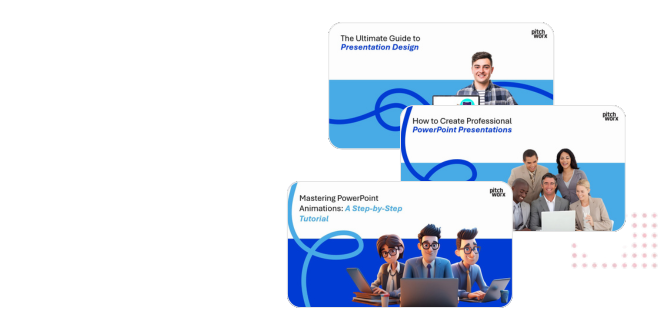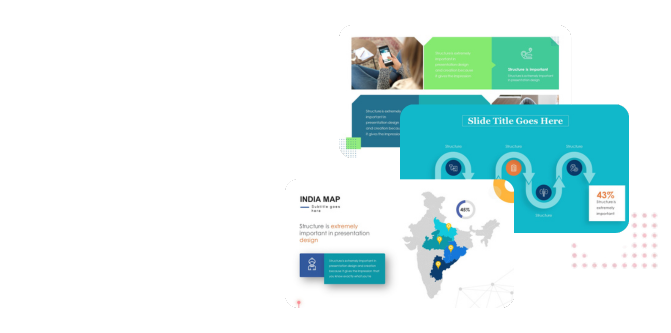Published: November 19, 2025 | Reading Time: 15 minutes | Author: PitchWorx Design Team
Table of Contents
- Introduction: The Million-Dollar Slide
- Understanding the Trinity of SaaS Metrics
- The Golden Ratio: Why LTV:CAC Is Your Most Important Slide
- Advanced Visualization Techniques: Transforming Data Into Funding Stories
- Creative Hacks: Making Your Metrics Memorable
- Industry-Specific Benchmarks: How Your Metrics Stack Up
- Future-Forward Metrics: What’s Emerging in 2025
- Common Visualization Mistakes That Kill Funding Chances
- The Technology Stack: Tools for SaaS Metrics Visualization
- Case Study: How Proper Metrics Visualization Secured a $15M Series A
- Building Your SaaS Metrics Slide Sequence: A Proven Structure
- Conclusion: Your Metrics Are Your Story
Introduction: The Million-Dollar Slide That Makes or Breaks SaaS Funding
In the hyper-competitive landscape of American SaaS startups, your investor deck’s most critical slides are your SaaS metrics visualizations. With 73% of rejected pitches failing due to poor communication of unit economics, the difference between a Series A rejection and a term sheet often comes down to how compellingly you present your CAC, LTV, and MRR. This guide will show you how to transform raw SaaS data into investor-grade visualizations that secure funding.
Understanding the Trinity of SaaS Metrics: Why CAC, LTV, and MRR Rule Investor Decisions
Customer Acquisition Cost (CAC)
CAC represents how much you spend to acquire one paying customer. Investors evaluate your CAC Payback Period (top-quartile companies achieve this in 5-7 months), CAC by channel, and the trend of your CAC over time.
Lifetime Value (LTV)
LTV calculates the total revenue a customer generates. Your calculation must account for gross margin, churn rate sensitivity, and expansion revenue (Net Revenue Retention).
Monthly Recurring Revenue (MRR)
MRR represents predictable monthly revenue. Sophisticated investors dissect New MRR, Expansion MRR, Contraction MRR, Churn MRR, and Net New MRR.
The Golden Ratio: Why LTV:CAC Is Your Most Important Slide
This single metric tells investors if your business model is sound. A 3:1 ratio is the gold standard for Series A. A simple, color-coded bar chart comparing LTV to CAC with the ratio prominently displayed creates an immediate positive association.
Advanced Visualization Techniques: Transforming Data Into Funding Stories
The Cohort Retention Curve
This shows how different customer cohorts retain over time. When newer cohorts show better retention, it demonstrates continuous product improvement.
The MRR Movement Waterfall
This chart decomposes your MRR growth into components (new, expansion, contraction, churn), revealing your growth composition and retention quality.
The CAC Payback Heat Map
For multiple acquisition channels, a heat map provides instant clarity on which channels are most efficient.
Creative Hacks: Making Your Metrics Memorable
- The “Magic Number” Visualization: Show your Sales Efficiency Magic Number as a literal magic wand graphic.
- The “Rule of 40” Scorecard: Create a scorecard visual that compares your performance to elite public companies.
- Animated Metric Reveals: Use subtle animations in live presentations to control the flow of information.
Industry-Specific Benchmarks: How Your Metrics Stack Up in US Markets
Your deck should explicitly state which SaaS category you’re in (B2B Enterprise, SMB, or Prosumer/PLG) and compare your metrics against the appropriate benchmarks for that category.
Future-Forward Metrics: What’s Emerging in 2025
Sophisticated investors are now looking at forward-looking indicators like Product Qualified Leads (PQL) Conversion Rate, Time to Value (TTV), and Revenue Per Employee.
Common Visualization Mistakes That Kill Funding Chances
Avoid showing revenue instead of metrics, cherry-picking timeframes, presenting metrics without benchmarks, creating overly complex visualizations, and using raw Excel screenshots.
The Technology Stack: Tools for SaaS Metrics Visualization
The modern stack includes data infrastructure tools like ChartMogul, visualization creation tools like Figma, and final assembly in PowerPoint or Keynote. Specialized presentation design agency can ensure these metrics are not just accurate but strategically visualized.
Case Study: How Proper Metrics Visualization Secured a $15M Series A
A B2B SaaS company transformed their deck by moving unit economics to slide 4, creating a prominent LTV:CAC visualization, adding an MRR waterfall, and including cohort retention curves. They went from six rejections to a successful $15M Series A, with the lead partner praising their metrics slide as the most compelling they’d seen that quarter.
Building Your SaaS Metrics Slide Sequence: A Proven Structure
The optimal metrics sequence for an investor pitch is: Unit Economics Overview → MRR Waterfall Chart → Cohort Retention Analysis → Growth Efficiency Metrics → Future Projections. This tells a complete story of a healthy, efficient, and scalable business.
Conclusion: Your Metrics Are Your Story
In the data-driven world of US SaaS investing, your CAC, LTV, and MRR aren’t just numbers—they’re the narrative thread that convinces investors you’ve built a sustainable, scalable business. Raw numbers don’t tell stories; visualization transforms data into narrative. Whether you invest in professional PowerPoint design services or build your own visualizations, the principles of clarity, context, and strategic storytelling are what win term sheets.










